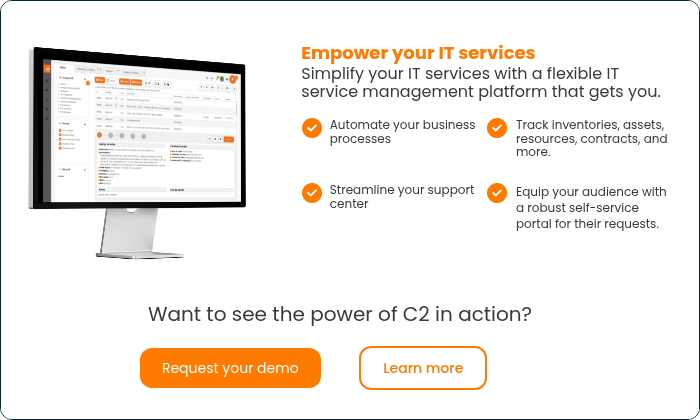Ensuring optimal continuity of patient care while streamlining costs is a real challenge. Organizations operating in the health industry are currently looking for efficient and flexible IT solutions to handle this challenge. They face context regulation, cost rationalization, constant technological updates, a greater amount of staff requests for mobility and delivery of ever more rapid clinical and administrative services. Beyond this situation, the main objective remains to provide quality services to patients through an accessible and effective system.
To ensure a seamless platform, clear business processes must be established. Directly involved with these processes, IT support also proves to be an ally in ensuring the continuity of service supply. In this business context, consolidation and automation of support activities allow the ability to streamline costs, simplifying Service Management processes. A 24/7 Incident Management program, the creation of a recovery activity plan, the establishment of a one-stop service request management or the development of indicators and SLAs, the creation of a quality assurance plan, a shared knowledge base and valuable reports represent only a fraction of the possibilities that an ITSM (IT Service Management) solution brings to a health sector institution.
Meet compliance requirements using technologies and best practices
Many hospitals and medical facilities now begin a shift in their operational perspectives and gradually integrate IT solutions, using new technologies within a hybrid environment. Others prioritize the status quo, preferring to keep full control of their data by installing solutions on their servers (On-Premises mode). To meet regulatory standards and compliance requirements, managers can use the cloud to coordinate IT asset management but should keep in mind the security element. Health organizations, therefore, preserve sensitive data from internal servers and evaluate the possibility of outsourcing certain functions, adapting to market trends in the cloud. SaaS Service Management solutions increasingly meet these compliance criteria based on best industry practices.
Business processes automation through simplicity, mobility, and collaboration
Although still being used, help desk legacy-type solutions do not allow flexibility through process automation and efficient workflows. In other words, in addition to their high cost, these outdated versions are not agile and restrict changing organizational needs. This change management is now omnipresent in the medical field, particularly because of the gradual creation of digital patient records. It therefore requires a flexible integration of different ITSM. Process automation can be achieved from a complete Service Management solution service, supporting core Service Management capacities defined by the best industry practices. In sum, these functions allow you to optimize current computing systems to enjoy routine monitoring and task management automation. Like many other areas of business, health care is taken with high demand in terms of mobility. This evolving need comes not only from practitioners themselves and administrative staff but also from the IT staff and the patients. The new generation of professionals grows in the same direction, and more workers in the health industry move from one institution to another. These people need quick and direct access to existing systems.
ITSM solutions support automating these processes and mobility needs, including using self-service web portals accessible from a tablet or smartphone. Integrated social functions even allow different parties to work together, sharing knowledge bases to meet service demands.






